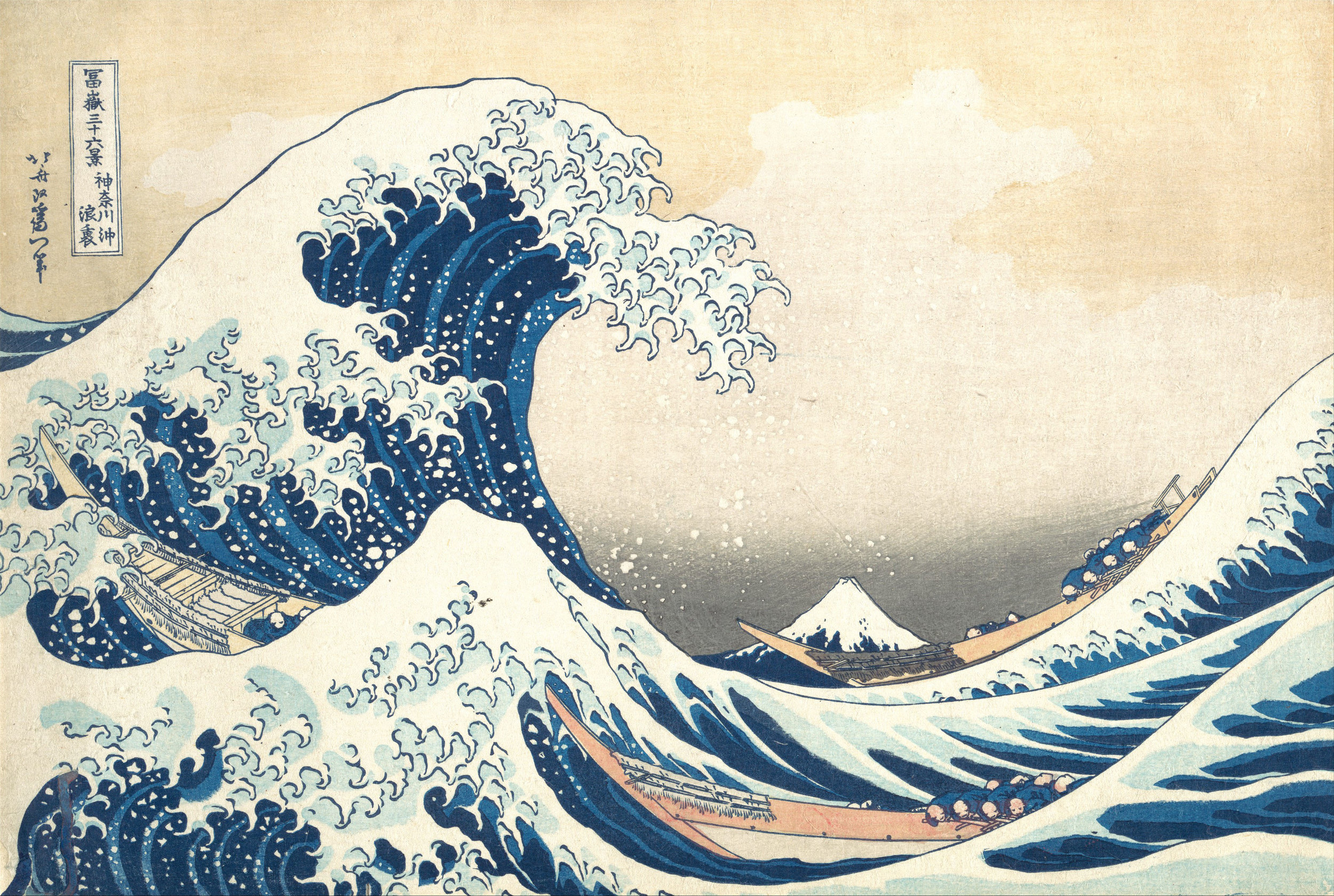Culture Analysis: "The Great Wave off Kanagawa"
"File:Tsunami by hokusai 19th century.jpg." Wikimedia Commons, the free media repository.
[This project is part of an independent study on Japanese aesthetics and history. I hope you enjoy.]
If I tell you the word “tsunami,” this print is probably the first thing that pops into your mind. Well, to tell you the truth, although there were waves in Kanagawa, none were of this size so it is not actually a tsunami. Tsunami or not, Great Wave off Kanagawa still appeals to both Japanese and foreign audience. Some say they even prefer it over the cliché Mona Lisa sitting in the Louvre. To understand its aesthetic appeal, we first have the understand the method of creating this print.
Great Wave off Kanagawa was created using the ukiyo method. Artists and sculptors work together to design and carve out blocks of wood to produce these prints. Since it was cheaply produced like a printing press, ukiyo prints were not seen as “high-class” and are aimed at a wide range of people across socioeconomic levels. The Ukiyo movement in Japanese is called the floating world (there are two meanings of uki: miserable and floating). These prints usually depict the daily life of a Japanese person by showing portraits of Kabuki actors and courtesans. Because of these appealing subjects, the Japanese audience receive pleasure and forget misery of the real world.
Katsushika Hokusai, the aesthetic architect of this piece, did not actually follow the traditional subjects of human actors. Instead, he shone a light on the natural world. Interestingly, nature was not usually highlighted by artists yet this subject appealed to a wide array of people. Why is that?
Shinto, one of the dominant religions in Japan, presents the natural world and its order as the realm of the gods (kami). Now, if we look at the print itself, the subject – the violent rage of the sea – represent the unpredictable power embedded in nature. The waves dominate the frame in all its Prussian Blue glory (this pigment is actually new to Japan through the trade with the Dutch). The tip of the waves are like claws, ready to crash down onto the rocky surface. The dark sky near the horizon indicate that it’s early morning. Along the curves of the waves, fishermen are seen on tiny boats called oshiokuri-bune. These boats are very safe and heavily built. Fishermen would conduct their lives on these boats, as they can last up to 10 days. In the print, the crew is seen wearing a work apparel named samue which are worn in Autumn or Spring. Here, the crew are holding tight to the time of their boats as they embrace for impact.
And between the ferocious waves and the fragile crew stood Mt. Fuji, disguised as one of the waves in the same hue of blue. Normally, the mountain can only be seen from the sea in the morning as it is engulfed by the fog by noon. Snow can be spotted on the of Mt. Fuji indicating that it is not a tropical season. Sitting there quietly as this scene unfold, Mt. Fuji embodies the spiritual heart of Japan. Instead of the dense smoke of factories and the steady humming of machines of the industrialized world, Japan looks to the natural world as a source of worship and awe.
If you take a step back from the intricate details of the print, you could see a yin and yang symbol. The dangerous waves balances out the calm Mt. Fuji. At the middle of it all are the sailors. Between the anger and the sacredness of nature, we sense the fragility of human life. It looks as if nature has restraint and empathy for us. The print gives the us the bird-eye view of a god looking down on humanity. The similarity might remind us about how we might look down on a line of ants. It gave us the ability to see the balance in nature between its fury and mercy. It leaves the judgement to us whether decide whether the humans survived in our imagination.
The method of Ukiyo printmaking itself cannot keep up with time. The woodblocks will eventually wear down and dysfunctional to use. Just like the method of Ukiyo by itself is impermanent, so is human life. It does not matter if our species last for a million years or a trillion, nature will go on without us.
Similarly to how light is just rising over the horizon in the print, we might not be able to see what is ahead of us. We do not know what nature holds for us. And so with the time we have left, you never know when you will see such frightful yet beautiful blend of power if you have never wandered into nature yourself.
